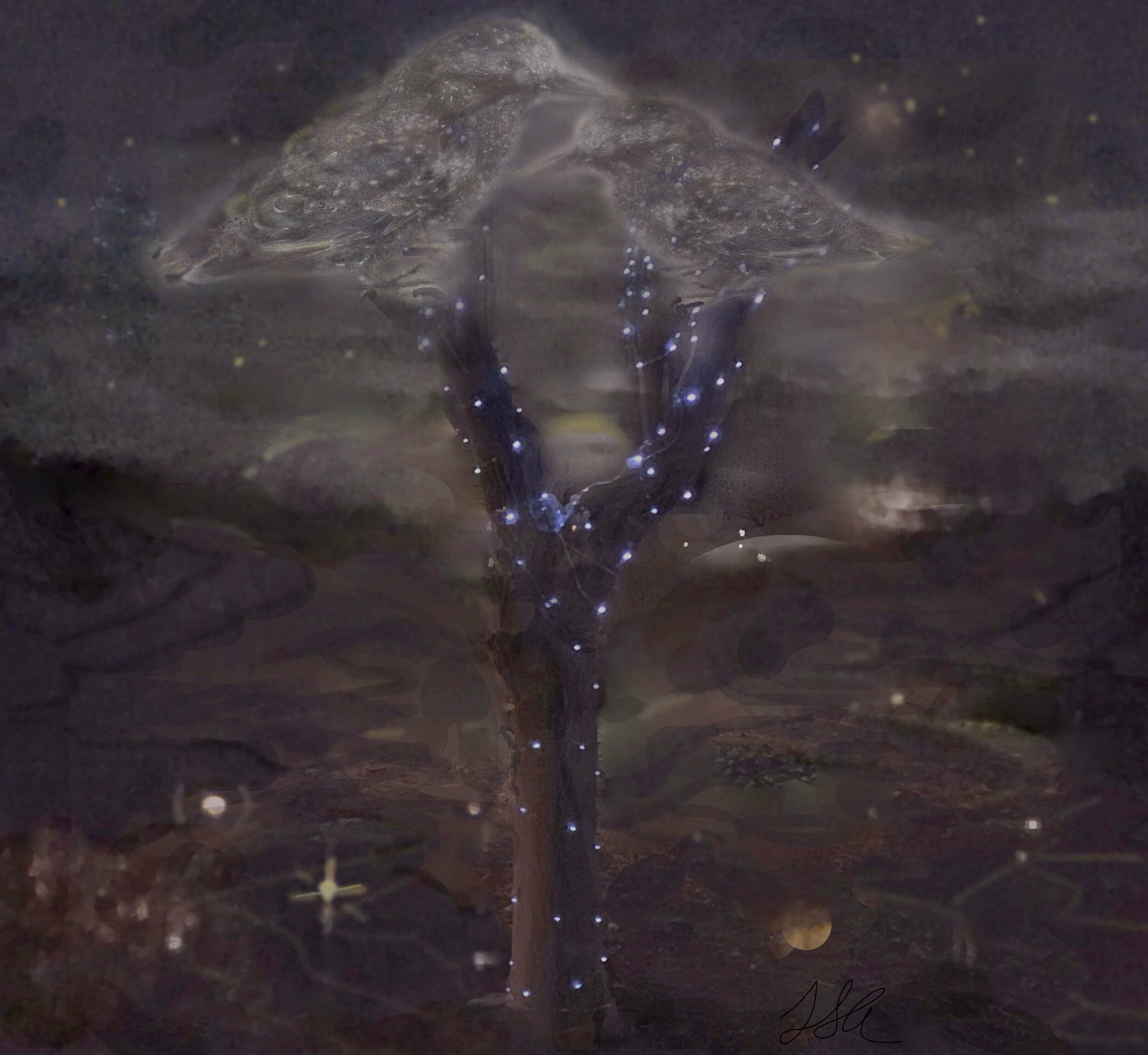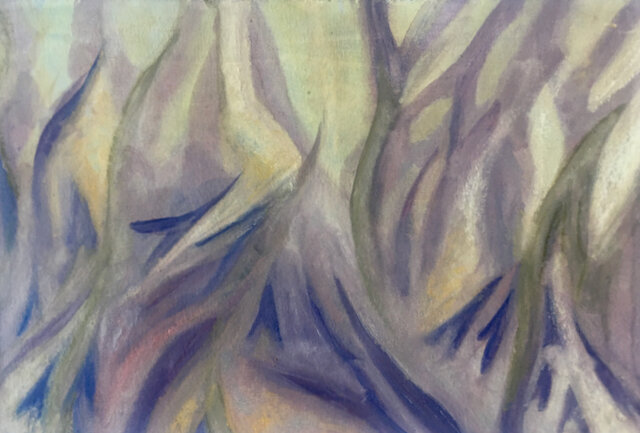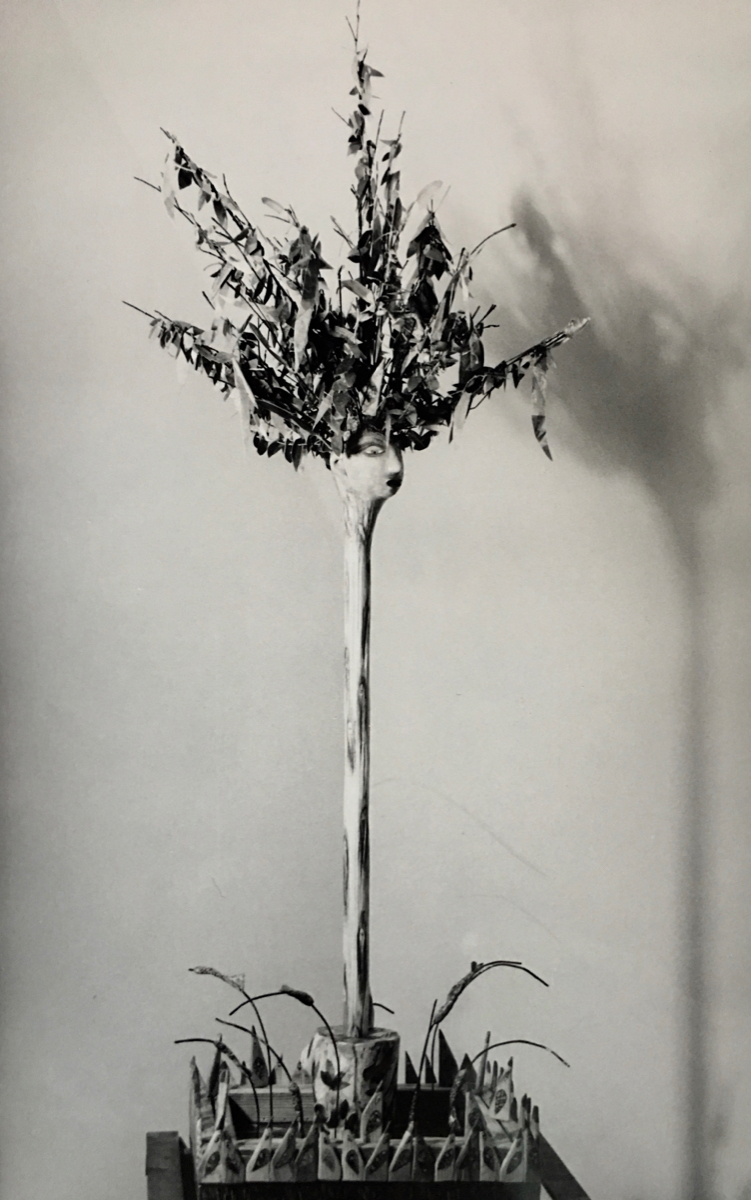Nocturnal Anglers ©️2021 LSAuth.
I look; morning to night I am never done with looking.
~ Mary Oliver
When the 2020 pandemic shut down the world, it was almost impossible to see art in museums and galleries. Of course most of us artists had been sharing pictures of our art online for years before CoVid hit, but this has never been a substitute for showing the actual work. The life force is inextricable from the physical work; I missed hearing about and attending my colleagues’ shows all year. I felt the void and the depression everywhere. I am lucky to live in a city that opened its art museum last summer 2020, and I experienced some amazing exhibits. But the local art galleries remained shut down until May 2021.
I decided to take this past year as an opportunity to update my printmaking skills. In previous blog posts I have written about my early training as a printmaker ( blog posts 7 and 8 )
I subscribed to the PhotoShop app this year — paying a monthly fee was an incentive to learn enough skills to create an image. I had done a little PhotoShop before this, making cards and posters, but nothing that I would call “my work”. PhotoShop is the modern printmaking medium for me — it is silkscreening without the solvents and inks. Of course, I will never be anything close to a master of PhotoShop, for it is truly a wonderland of infinite magical possibilities — and all the overwhelming frustration that goes with this. I had to discipline myself to keep my boundaries quite limited so that I could concentrate on building an image that I could live with and be willing to share.
Whether I am painting or silkscreening, image making is a process of adding and subtracting many layers of various objects. Each of the 5 images shown on this post contain pieces of individual works that span my portfolio over several decades, as well as my own photo studies of landscapes and objects that I have loved and collected in my visual diary. Photos are forever, even if I no longer own an artwork anymore, I own the image and I can recreate it in a different context or setting.
So, I digitally cut up photos of past works and recombine them with my photo studies into a single piece, the same way I did traditional collage in the past.
All my work, no matter what medium, starts with an imaginative concept and ends when I can go no further. That is, I know the work is finished when I cannot do anything else to make it better and attempts to do so make it worse.
Discovering the end point in any work I do is an integral part of my process. When I surprise myself I feel a glimmer of success. In the end, the goal is never to let anyone see or know my effort; I only care that they enjoy my work.
I am grateful to the developers of this marvellous tool of Photoshop. It has not replaced my drawing and painting by any means, for I will always prefer the tactility and presence of a painted surface to a digital one. But it has given me another way to represent my vision, a different way that I can only exploit in PhotoShop, and this has contributed greatly to how I see and imagine my next endeavour.
above l to r: Between Heaven & Earth, Starling Rock, Explorer, and Bargaining for Stars.





















